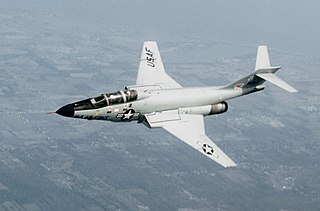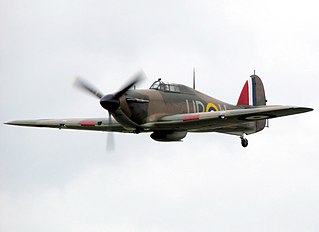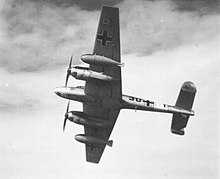
Fighter aircraft are military aircraft designed primarily for air-to-air combat. In military conflict, the role of fighter aircraft is to establish air superiority of the battlespace. Domination of the airspace above a battlefield permits bombers and attack aircraft to engage in tactical and strategic bombing of enemy targets.

An interceptor aircraft, or simply interceptor, is a type of fighter aircraft designed specifically for the defensive interception role against an attacking enemy aircraft, particularly bombers and reconnaissance aircraft. Aircraft that are capable of being or are employed as both ‘standard’ air superiority fighters and as interceptors are sometimes known as fighter-interceptors. There are two general classes of interceptor: light fighters, designed for high performance over short range; and heavy fighters, which are intended to operate over longer ranges, in contested airspace and adverse meteorological conditions. While the second type was exemplified historically by specialized night fighter and all-weather interceptor designs, the integration of mid-air refueling, satellite navigation, on-board radar and beyond visual range (BVR) missile systems since the 1960s has allowed most frontline fighter designs to fill the roles once reserved for specialised night/all-weather fighters.

A light bomber is a relatively small and fast type of military bomber aircraft that was primarily employed before the 1950s. Such aircraft would typically not carry more than one ton of ordnance.

Bomber destroyers were World War II interceptor aircraft intended to destroy enemy bomber aircraft. Bomber destroyers were typically larger and heavier than general interceptors, designed to mount more powerful armament, and often having twin engines. They differed from night fighters largely in that they were designed for day use.

A heavy fighter is a historic category of fighter aircraft produced in the 1930s and 1940s, designed to carry heavier weapons or operate at longer ranges than light fighter aircraft. To achieve performance, most heavy fighters were twin-engine, and many had multi-place crews; this was in contrast to light fighters, which were typically single-engine and single-crew aircraft. In Germany, these larger fighters were known as Zerstörer ("destroyer").

The McDonnell F-101 Voodoo is a supersonic jet fighter designed and produced by the American McDonnell Aircraft Corporation.

Heavy bombers are bomber aircraft capable of delivering the largest payload of air-to-ground weaponry and longest range of their era. Archetypal heavy bombers have therefore usually been among the largest and most powerful military aircraft at any point in time. In the second half of the 20th century, heavy bombers were largely superseded by strategic bombers, which were often even larger in size, had much longer ranges and were capable of delivering nuclear bombs.

The Messerschmitt Bf 110, often known unofficially as the Me 110, is a twin-engined Zerstörer, fighter-bomber, and night fighter (Nachtjäger) developed in Nazi Germany in the 1930s and used by the Luftwaffe during World War II. Hermann Göring was a proponent of the Bf 110, believing its heavy armament, speed, and range would make the Bf 110 the Luftwaffe’s premier offensive fighter. Early variants were armed with two MG FF 20 mm cannon, four 7.92 mm MG 17 machine guns, and one 7.92 mm MG 15 machine gun for defence. Development work on an improved type to replace the Bf 110 - the Messerschmitt Me 210 - began before the war started, but its shakedown troubles resulted in the Bf 110 soldiering on until the end of the war in various roles. Its intended replacements, the aforementioned Me 210 and the significantly improved Me 410 Hornisse, never fully replaced the Bf 110.

The Boulton Paul Defiant is a British interceptor aircraft that served with the Royal Air Force (RAF) during World War II. The Defiant was designed and built by Boulton Paul Aircraft as a "turret fighter" to meet the RAF requirement for day and night fighters that could concentrate their firepower on enemy bombers which were not expected to have fighter escorts due to the distance from Germany to the United Kingdom. The Defiant had all its armament in a dorsal turret offering the ability to fire in most directions. The same principle was used in the Royal Navy's Blackburn Roc which was also built by Boulton Paul.

In aviation, a drop tank is used to describe auxiliary fuel tanks externally carried by aircraft. A drop tank is expendable and often capable of being jettisoned. External tanks are commonplace on modern military aircraft and occasionally found in civilian ones, although the latter are less likely to be discarded except in an emergency.

The Kawasaki Ki-45 Toryu was a two-seat, twin-engine heavy fighter used by the Imperial Japanese Army in World War II. The army gave it the designation "Type 2 Two-Seat Fighter"; the Allied reporting name was "Nick". Originally serving as a long-range escort-fighter, the design — as with most heavy fighters of the period — fell prey to smaller, lighter, more agile single-engine fighters. As such, the Ki-45 instead served as a day and nighttime interceptor and strike fighter.

A Schnellbomber is a bomber that relies upon speed to avoid enemy fighters, rather than relying on defensive armament and armor.

The escort fighter was a concept for a fighter aircraft designed to escort bombers to and from their targets. An escort fighter needed range long enough to reach the target, loiter over it for the duration of the raid to defend the bombers, and return.

The Battle of Britain was an effort by the German Air Force (Luftwaffe) during the summer and autumn of 1940 to gain air superiority over the Royal Air Force (RAF) of the United Kingdom in preparation for the planned amphibious and airborne forces invasion of Britain by Operation Sea Lion. Neither the German leader Adolf Hitler nor his High Command of the Armed Forces believed it was possible to carry out a successful amphibious assault on Britain until the RAF had been neutralised. Secondary objectives were to destroy aircraft production and ground infrastructure, to attack areas of political significance, and to terrorise the British people into seeking an armistice or surrender.
WS-201A, informally known as the 1954 Interceptor, was a United States Air Force project to develop a dedicated interceptor aircraft that would enter service in 1954. Several aircraft were developed as part of the project, leading to the F-102 Delta Dagger, F-106 Delta Dart, Republic XF-103 and, indirectly, the F-101B Voodoo and F-104 Starfighter. The electronics and weapons developed for the program would become common on US designs, including the AIM-4 Falcon missile and a variety of Hughes Aircraft–supplied radar and fire control systems. The project also led, eventually, to the upgrading of the SAGE battle control computers to directly control the interceptors for much of their flight. Although greatly delayed, the resulting systems operated for approximately 20 years, into the 1980s.

The Defence of the Reich is the name given to the strategic defensive aerial campaign fought by the Luftwaffe of Nazi Germany over German-occupied Europe and Germany during World War II. Its aim was to prevent the destruction of German civilians, military and civil industries by the Western Allies. The day and night air battles over Germany during the war involved thousands of aircraft, units and aerial engagements to counter the Allied strategic bombing campaign. The campaign was one of the longest in the history of aerial warfare and with the Battle of the Atlantic and the Allied Blockade of Germany was the longest of the war. The Luftwaffe fighter force defended the airspace of German-occupied territory against attack, first by RAF Bomber Command and then against the United States Army Air Forces (USAAF) in the Combined Bomber Offensive.

The 56th Operations Group is a unit of the United States Air Force, and the flying component of the 56th Fighter Wing.

The 92d Cyberspace Operations Squadron is a United States Air Force unit.

During World War II, aviation firmly established itself as a critical component of modern warfare from the Battle of Britain in the early stages to the great aircraft carrier battles between American and Japanese Pacific fleets and the final delivery of nuclear weapons. The major combatants. Germany and Japan on the one side and Britain, the United States and the USSR on the other manufactured huge air forces which engaged in pitched battles both with each other and with the opposing ground forces. Bombing established itself as a major strategic force, and this was also the first war in which the aircraft carrier played a significant role.
The term penetration fighter has been used to describe a long-range fighter aircraft designed to penetrate enemy air defences and attack defensive interceptors. The concept is similar to the escort fighter, but differs primarily in that the aircraft would not operate in close concert with bombers. Both types are sub-classes of the strategic fighter. The same general mission is also carried out by intruders, but these are generally night fighters or light bombers that do not have the air combat performance of this concept.


















